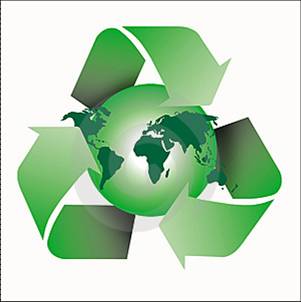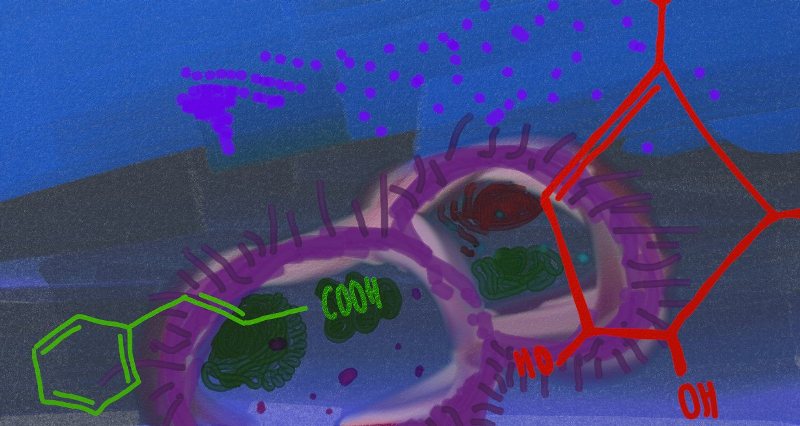Team:Alberta-North-RBI E/Waiting4Pizza
From 2012e.igem.org
| Line 10: | Line 10: | ||
Due to environmental concern, government regulations and economic considerations, there has been a consistent increased effort in recycling endeavours over the past years. Several hundred million metric tons of municipal solid waste is disposed of in Canada and the United States annually. Paper products alone account for approximately 45% of municipal solid waste by weight before recycling (N. Lark et al.). As a result, recycling paper products not only affects the upstream processes in paper production (where raw materials are acquired), but also has consequences on the downstream portion of paper use (waste-disposal). | Due to environmental concern, government regulations and economic considerations, there has been a consistent increased effort in recycling endeavours over the past years. Several hundred million metric tons of municipal solid waste is disposed of in Canada and the United States annually. Paper products alone account for approximately 45% of municipal solid waste by weight before recycling (N. Lark et al.). As a result, recycling paper products not only affects the upstream processes in paper production (where raw materials are acquired), but also has consequences on the downstream portion of paper use (waste-disposal). | ||
| + | |||
Recycled paper processing plants use paper as their feedstock and recover fibre that can be used to produce new paper products. Paper fibre cannot, however, be recycled endlessly. It is generally accepted that a fibre can be used four to six times before it becomes too short to be utilized in new paper products. This unusable fibre accounts for 15-20% of the recycled fibres and is typically disposed of in a waste stream to landfills (N. Lark et al.). | Recycled paper processing plants use paper as their feedstock and recover fibre that can be used to produce new paper products. Paper fibre cannot, however, be recycled endlessly. It is generally accepted that a fibre can be used four to six times before it becomes too short to be utilized in new paper products. This unusable fibre accounts for 15-20% of the recycled fibres and is typically disposed of in a waste stream to landfills (N. Lark et al.). | ||
| + | |||
The major constituent of these paper fibres is cellulose, a homopolysaccharide made up of β-D-glucose. Ergo, the unusable, short fibre in the waste stream of paper recycling plants is a significant source of potentially exploitable cellulose. Aromatics represent a potentially lucrative chemical endpoint for this cellulose, having high price per unit mass and a sustainable market in both the pharmaceuticals and cosmetics industries. The conversion of this waste into valuable industrial chemicals is a relatively unexplored business opportunity and is desirable from the standpoint of green and clean processing. | The major constituent of these paper fibres is cellulose, a homopolysaccharide made up of β-D-glucose. Ergo, the unusable, short fibre in the waste stream of paper recycling plants is a significant source of potentially exploitable cellulose. Aromatics represent a potentially lucrative chemical endpoint for this cellulose, having high price per unit mass and a sustainable market in both the pharmaceuticals and cosmetics industries. The conversion of this waste into valuable industrial chemicals is a relatively unexplored business opportunity and is desirable from the standpoint of green and clean processing. | ||
| + | |||
== Our Solution == | == Our Solution == | ||
As technologies continue to improve, there has been increasing interest in exploring the use of biomass as a renewable resource. Biomass is typically a by-product of an industrial process and considered waste. In particular, the paper sludge produced by paper recycling plants is presently disposed of via landfill or burnt. This is a significant source of potentially exploitable cellulose that can not only be used to produce high-value chemicals but will also have a positive impact on waste management. Additionally, paper sludge is an attractive feedstock compared to other lignocellulosic biomass because is processed prior to its utilization and requires no pre-treatment as a result. | As technologies continue to improve, there has been increasing interest in exploring the use of biomass as a renewable resource. Biomass is typically a by-product of an industrial process and considered waste. In particular, the paper sludge produced by paper recycling plants is presently disposed of via landfill or burnt. This is a significant source of potentially exploitable cellulose that can not only be used to produce high-value chemicals but will also have a positive impact on waste management. Additionally, paper sludge is an attractive feedstock compared to other lignocellulosic biomass because is processed prior to its utilization and requires no pre-treatment as a result. | ||
| + | |||
Many studies have concentrated on the conversion of the cellulose in the paper waste to different types of value-added chemicals. Primarily, it has been considered for conversion to ethanol (Yamshita et al. 2006; Vamvuka et al. 2009; Kang et al. 2010, 2011) and lactic acid (Marques et al. 2008; Mukhopadhyay 2009). Our business plan focuses on the production of aromatics from this cellulose. Aromatics represent a potentially lucrative chemical endpoint, having high price per unit mass and a sustainable market in both the pharmaceuticals and cosmetics industries. | Many studies have concentrated on the conversion of the cellulose in the paper waste to different types of value-added chemicals. Primarily, it has been considered for conversion to ethanol (Yamshita et al. 2006; Vamvuka et al. 2009; Kang et al. 2010, 2011) and lactic acid (Marques et al. 2008; Mukhopadhyay 2009). Our business plan focuses on the production of aromatics from this cellulose. Aromatics represent a potentially lucrative chemical endpoint, having high price per unit mass and a sustainable market in both the pharmaceuticals and cosmetics industries. | ||
| + | |||
Our company’s proposed process has two parts: in the first, cellulose from waste sludge from recycling plants is converted into glucose; in the second, glucose from the first part is used as a feedstock for the production of aromatic chemicals. In the glucose-aromatic conversion, we plan to use only a single metabolic pathway with “on and off switches” at each “step”. This gives us the freedom to produce any intermediary compounds in addition to the natural end product. The current proposed pathway will allow us to produce either shikimate or cinnamic acid derivatives using the method described above. Possible switch activators include temperature pH, or the addition of an inhibiting chemical such as phosphate. | Our company’s proposed process has two parts: in the first, cellulose from waste sludge from recycling plants is converted into glucose; in the second, glucose from the first part is used as a feedstock for the production of aromatic chemicals. In the glucose-aromatic conversion, we plan to use only a single metabolic pathway with “on and off switches” at each “step”. This gives us the freedom to produce any intermediary compounds in addition to the natural end product. The current proposed pathway will allow us to produce either shikimate or cinnamic acid derivatives using the method described above. Possible switch activators include temperature pH, or the addition of an inhibiting chemical such as phosphate. | ||
| + | |||
Our solution encompasses two sections: | Our solution encompasses two sections: | ||
| + | |||
Process Design | Process Design | ||
| + | |||
Genetics | Genetics | ||
Revision as of 04:49, 14 September 2012

Contents |
The Problem/Opportunity
|
Due to environmental concern, government regulations and economic considerations, there has been a consistent increased effort in recycling endeavours over the past years. Several hundred million metric tons of municipal solid waste is disposed of in Canada and the United States annually. Paper products alone account for approximately 45% of municipal solid waste by weight before recycling (N. Lark et al.). As a result, recycling paper products not only affects the upstream processes in paper production (where raw materials are acquired), but also has consequences on the downstream portion of paper use (waste-disposal).
Our SolutionAs technologies continue to improve, there has been increasing interest in exploring the use of biomass as a renewable resource. Biomass is typically a by-product of an industrial process and considered waste. In particular, the paper sludge produced by paper recycling plants is presently disposed of via landfill or burnt. This is a significant source of potentially exploitable cellulose that can not only be used to produce high-value chemicals but will also have a positive impact on waste management. Additionally, paper sludge is an attractive feedstock compared to other lignocellulosic biomass because is processed prior to its utilization and requires no pre-treatment as a result.
The Competitive LandscapeShikimic acid is a vital precursor to and major bottleneck in the production of the anti-influenza drug Tamiflu. Taking into account the recent H1N1 and H5N1 influenza outbreaks and reports of shikimic acid shortages in 2005, demand for the chemical seems likely to increase should another pandemic scare occur. Currently, pharmaceuticals giant Roche produces the majority of the world's supply of shikimic acid, holding an effective monopoly on the market. Their method of extraction involves isolating the compound from Chinese star anise, at a yield of approximately 30g of seed to very 1g of shikimate[cite]. Furthermore, as demonstrated by the Tamiflu shortages announced by Roche in 2005, a bad harvest will lead inevitably lead to mass shortages in the drug supply.
Our Competitive AdvantageUpcycled Aromatics’ competitive advantage lie in our flexibility, our choice of feedstock, and our tight integration between process and genetics.
The G-Map
View Larger Map Countdown
Concept Art
Flickr badge
www.flickr.com
This is a Flickr badge showing public photos and videos from Upcycled Aromatics. Make your own badge here.
Business model |
 "
"







